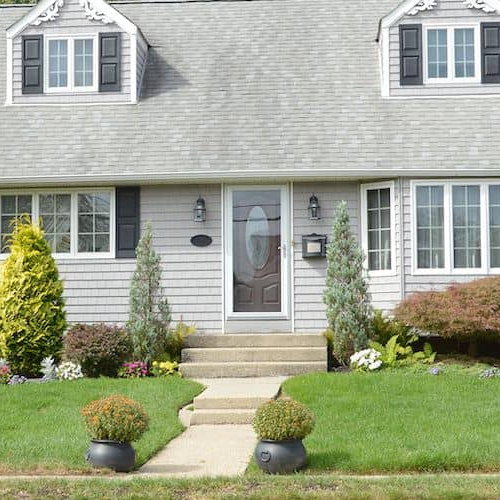The best cities for each generation
Aug 16, 2023
•10-minute read
Whether a home buyer is a Gen Zer seeking vibrant nightlife, a Gen Xer looking for family-friendly neighborhoods or a baby boomer in search of a peaceful retirement destination, they’ll want to know which cities will best gratify their needs. While every individual’s unique preferences might vary, different cities offer different opportunities and amenities that might appeal to certain ages more. Those looking to move to an area that has more people their age and better job opportunities or higher pay for their age bracket may find a home in one of these best cities for each generation.
Finding the best U.S. cities for each generation to live
The researchers at BestPlaces.net used the following metrics to determine some of the best places for Generation Z, millennials, Generation X and baby boomers/the silent generation to live.
- Percent of population within each generation’s age range
- Unemployment rate for each generation’s age range
- Median household income for each generation’s age range
- Median home value
- Average monthly rent for studio apartment
- Amenities
- Percent of commuters using public transportation
To provide a wider range of areas, we filtered out any large metro areas within a 100-mile radius of a higher-ranking area in the same state. Based on data curated and ranked by BestPlaces and Rocket Mortgage®, these are the best U.S. cities for members of each generation to live.
The 3 best cities for zoomers (Gen Z)
Zoomers, commonly known as Gen Zers, make up the youngest adult population. Although there are younger members of Gen Z, we’ve narrowed it down and are defining this generation as anyone of a more probable home buying age (20 – 24).
As Gen Z starts to consider home buying, factors like affordability, nightlife and growth opportunities may be at the forefront of their minds. With that being said, it needs to be addressed that the youngest adult population has the lowest median income. This should come as no surprise considering that income and asset value tend to increase with time and experience. However, we found that Gen Zers do not make over or even equal to the average household income in any major metro area. This statistic could explain why all of the following cities are located in the Midwest, as affordability was one of the heaviest weighted factors in our rankings.
With that, here are the top three cities for Gen Z.
1. Des Moines, Iowa
- Metro population: 702,036
- Percent of Gen Zers: 2%
Des Moines is one of the most affordable metro areas in the U.S., with an average monthly rent for a studio apartment in Des Moines going for about $780 and houses selling for around $253,300. With less to spend on housing, Gen Zers looking to mingle with friends – or make new ones – have more room in their budgets to explore the hundreds of area restaurants and 50+ downtown bars and breweries, or attend a farmer’s market, concert or annual festival.
2. Fort Wayne, Indiana
- Metro population: 415,887
- Percent of Gen Zers: 1%
Touted for its longstanding, rich history, Fort Wayne is the second-best place to stay for Gen Z. This Indiana city, which is over 200 years old, is very affordable and has relatively low unemployment rates. The average monthly rent for a studio apartment in this metro area is $660, and homes are valued around $206,400. Among its residents, only about 8.6% of Gen Zers are unemployed.
3. Rock Island, Illinois
- Metro population: 384,055
- Percent of Gen Zers: 9%
Due to its affordability and job market, Rock Island is another great city for Gen Zers. Home values in this small city average around $162,700, and studio apartments lease for about $610 per month, putting it in the top 15% of most affordable metro areas in the U.S. Of the 884,000 residents, almost 40% of residents are among the youngest adult population.
Best Gen Z cities 4 – 10
The following cities fell just under the top three, but within the top 10 best cities for Zoomers. Listed with each city is the percentage of Gen Zers making up the population within the metro area.
- Canton, Ohio – 30.2%
- Reading, Pennsylvania – 67.7%
- Minneapolis, Minnesota – 16.1%
- Portland, Maine – 6.0%
- Omaha, Nebraska – 4.6%
- San Francisco, California – 60.4%
- St. Louis, Missouri – 39.5%
The 3 best cities for millennials (Gen Y)
According to the 2023 National Association of REALTORS® (NAR)’s Generation al Trends report, Millennials make up 28% of current home buyers. That’s only second to the boomer generation, which makes up 39%. And many of them are first time home buyers. As of 2023, 70% of younger millennial buyers and 46% of older ones are purchasing a home for the first time.
Here are the cities they may find suit their needs best.
1. Des Moines, Iowa
- Metro population: 702,036
- Percent of millennials: 62%
With a median household income of around $83,160, Des Moines Millennials make 10% over the average median household income for the metro area. On top of that, the cost of living for the metro area is 21.3% lower than the national average.
2. Madison, Wisconsin
- Metro population: 674,506
- Percent of millennials: 24%
Millennials in search of job prospects may find something in Madison, where the unemployment rate for this generation is only 2%. That’s a lower rate than 99% of the country. The metro area has a diverse economy, with largest employers ranging from American Family Insurance, Land’s End, American Girl and John Deere.
3. Minneapolis, Minnesota
- Metro population: 3,659,156
- Percent of millennials: 12%
Minneapolis was recently named the least stressed city in America due, in part, to its abundance of natural landscapes and number of days per month residents reported feeling mentally and physically healthy. To help improve quality of life even further, millennial residents can avoid stressful traffic and join other commuters on the city’s award-winning public transit system, which ranks in the top 10% of the country for the percentage of residents who use it.
Best millennial cities 4 – 10
The following cities fell just under the top three, but within the top 10 best cities for millennials. Listed with each city is the percentage of millennials making up the population within the metro area.
- Omaha, Nebraska – 27.72%
- San Jose, California – 30.50%
- Seattle, Washington – 31.73%
- Austin, Texas – 33.05%
- Denver, Colorado – 31.78%
- Columbus, Ohio – 29.17%
- Salt Lake City, Utah – 31.06%
The 3 best cities for Generation X
Gen X makes up the percentage of people born between 1965 – 1979. According to NAR’s research, Gen Xers make up 24% of home buyers and 20% of sellers in the U.S. NAR also revealed that when looking at the reason to purchase a home, Gen Xers were more likely to purchase for the desire to be closer to jobs, school, public transit or for a job relocation. These findings seem to line up with our data, as the top cities for this generation are on the higher end of the cost spectrum and have vast, booming job markets.
The top three metro areas are as follows:
1. Manchester, New Hampshire
- Metro population: 420,504
- Percent of Gen Xers: 11%
Situated on the Merrimack River, this charming metro area is a great option for Gen Xers for many reasons, including plenty of amenities and recreational activities. Gen Xers in this city earn a median annual income of about $106,850, which is around $20,000 more than the city’s median household income.
2. Portland, Maine
- Metro population: 547,792
- Percent of Gen Xers: 79%
With an unemployment rate of just 3.6%, Portland offers a wide range of career opportunities, particularly in industries such as technology, health care and education. This vast career market, along with its small-town feel, make it an appealing location for Gen X professionals. With more amenities than 97% of the country, Gen Xers will find plenty to do with friends and their growing families.
3. York, Pennsylvania
- Metro population: 454,605
- Percent of Gen Xers: 73%
The third best place for Gen Xers, according to our data, is York. This metro area ranks in the top 6% of the country for its low unemployment rate, which sits at about 4.7%. Gen X residents typically make just over the area’s median household income, as the median income for their specific age bracket is about $89,400. For Gen Xers looking to settle down in a walkable area with solid education and work opportunities, this third best place might be a great fit.
Best Gen X cities 4 – 10
The following cities fell just under the top three, but within the top 10 best cities for Generation X. Listed with the city is the percentage of Gen Xers making up the population within the metro area.
- Rochester, New York – 27.10%
- Huntsville, Alabama – 27.45%
- Harrisburg, Pennsylvania – 26.63%
- St. Louis, Missouri – 26.69%
- Albany, New York – 27.04%
- Scranton, Pennsylvania – 27.28%
- Davenport, Iowa – 25.79%
The 3 best cities for Baby Boomers and the Silent Generation
The oldest of the generations, boomers and the Silent Generation are in retirement age and the majority have previously owned a home. According to the NAR report, their primary reason for purchasing a home is the desire to be closer to family, friends and other relatives. So, the following cities would be especially best for them if loved ones also lived close by.
1. Peoria, Illinois
- Metro population: 404,226
- Percent of 65+ residents: 21%
Peoria is a small, charming midwestern city. It is on the affordable side, with homes valued at around $139,400 – lower prices than 98% of the country. It’s a quiet area, but locals can enjoy walking through nature trails, visiting a museum or exploring the RiverFront District, one of Illinois’ oldest areas.
2. Canton, Ohio
- Metro population: 401,578
- Percent of 65+ residents: 48%
With rent averaging $580 per month, Canton is in the top 1% of the country for low rent prices. Canton’s cost of living is 25.3% lower than the national average, helping stretch budgets further, especially for those living on retirement funds.
3. Albany, New York
- Metro population: 898,265
- Percent of 65+ residents: 54%
New York’s capitol is twice the size of the aforementioned options with a population of nearly 900,000. Within this population, about 3% take public transportation – a higher percentage than 85% of metro areas across the country. The Capital District Transportation Authority provides regional transportation through bus routes and shuttle services. The city’s location also makes it easier to visit neighboring states and even another country. Within hours, residents can find themselves in Massachusetts, Pennsylvania or even Canada.
Best Boomer/Silent Generation cities 4 – 10
The following cities fell just under the top three, but within the top 10 best cities for boomers and the Silent Generation. Listed with the city is the percentage of those 65 and older within the metro area.
- Salisbury, Maryland – 24.34%
- Davenport, Iowa – 18.14%
- Harrisburg, Pennsylvania – 17.68%
- Madison, Wisconsin – 14.62%
- Sarasota, Florida – 32.18%
- Ann Arbor, Michigan – 14.13%
- Syracuse, New York – 17.19%
Summary: Different regions may serve different generational needs
According to our findings, different regions seem to serve different generational needs. In regions with high levels of economic inequality, younger generations may face more limited opportunities for upward mobility. They may be more concerned about economic stability and access to quality education and health care. In contrast, in regions with more equitable distribution of resources, younger generations may have greater access to opportunities for personal growth and self-fulfillment.
Overall, it’s clear that different regions serve different generational needs due to a combination of economic and social factors. Whether it's the hustle and bustle of a city or the tranquility of the countryside, these diverse environments provide what each generation may desire based on the stage of life they’re in. From career opportunities to family-friendly neighborhoods to retirement havens, there are certain characteristics of a city one may want to consider when finding their next home locale.
Generations defined
There are various age ranges used to define each generation in the U.S. Due to the age ranges used by Census Bureau’s American Community Survey, this article has defined the generations as such:
- Gen Z: born between 1999 – 2003 (ages 20 – 24, only home buying age included)
- Millennials: born between 1979 – 1998 (ages 25 – 44)
- Gen X: born between 1959 – 1978 (ages 45 – 64)
- Boomers/Silent Generation: born before 1959 (ages 65+)
In comparison, the NAR study defines Gen Z as those born after 1998, millennials as those born between 1980 – 1998, Gen X between 1965 – 1979, boomers between 1946 – 1964 and the Silent Generation between 1925 – 1945. Pew Research defines Gen Z as those born after 1996, millennials as those born between 1981 – 1996, Gen X between 1965 – 1980, boomers between 1946 and 1964 and the Silent Generation 1928 – 1945.
Methodology: Finding the best cities for each generation to live
In this study, we reveal the best places in the United States for Gen Z, millennials, Gen X and baby boomers/the Silent Generation. Our study looks at the statistics of metropolitan areas to find which have the highest concentration of each generation and which places have a healthy job market, higher-than-average salaries and affordability. We also focus on the unemployment rate for each generation, as well as housing costs. Finally, we compare the amenities in each metro and the availability of public transportation,
The research team at BestPlaces.net collected and analyzed the most recent data from the U.S. Bureau of Labor Statistics and the Census Bureau's American Community Survey. We chose metrics which are as current as possible and as detailed as possible to provide the most relevant and accurate insight.
The places analyzed in our study are the 150 largest metropolitan areas in the United States. These 150 metro areas are home to nearly 3/4 (74%) of all U.S. residents. Metropolitan areas are particularly useful for our rankings because they include not only each area's major cities but also the surrounding counties which include an area's suburbs.
Each data category is normalized and transformed to a common range of 0 – 100 points for scoring and comparison. Weights are applied to each metric which reflects its importance in the study. Because Gen Z has a higher likelihood of renting, the weights for median monthly rent (studio) and home value were switched, as you’ll see in the table below. The weighted scores for each metric are summed to create the overall best places for millennials to live. The final scores are sorted to produce the final rankings.
| Metric | Weight | Level | Source |
|---|---|---|---|
|
Percent of population |
21.7% |
Metro |
American Community Survey, 5yr data 2021-2017, U.S. Census Bureau |
|
Unemployment rate |
21.7% |
Metro |
American Community Survey, 5yr data 2021-2017, U.S. Census Bureau |
|
Household income |
21.7% |
Metro |
American Community Survey, 5yr data 2021-2017, U.S. Census Bureau |
|
Median home value |
17.4% (4.3% for Gen Z) |
Metro |
Federal Housing Finance Agency (FHFA) house price index by metro area, American Community Survey, 5yr data 2021-2017, Median Value of Owner-Occupied Housing Units by metro area |
|
Median monthly rent, studio |
4.3% (17.4% for Gen Z) |
Metro |
Small area Fair Market Rents, Housing and Urban Development, American Community Survey, 5yr data 2021-2017, Median Value of Owner-Occupied Housing Units by metro area |
|
Amenities |
8.7% |
Metro |
BestPlaces count of restaurants, retail stores & shops, social places, gyms, performance venues, more |
|
Public transportation |
4.3% |
Metro |
American Community Survey, 5yr data 2021-2017, U.S. Census Bureau |
Other statistics and sources were used in this study, including the following:
| Metric | Level | Source |
|---|---|---|
|
Area’s average household income for all generations |
Metro |
American Community Survey, 5yr data 2021-2017, U.S. Census Bureau |
|
Percent of millennials over or under average household income |
Metro |
American Community Survey, 5yr data 2021-2017, U.S. Census Bureau |
|
Cost of living |
Metro |
BestPlaces.net |

Kaitlin Davis
Kaitlin Davis is a Detroit native who holds a BA in Print and Online Journalism from Wayne State University. When she’s not writing mortgage, personal finance, or homes content, she enjoys getting involved with her community, traveling, photography and reading.
Related resources

9-minute read
A guide to first-time home buyer programs, loans and grants
If you’re a first-time home buyer interested in a loan or grant, there are several government programs to help you. Discover your options and see if yo...
Read more
9-minute read
Starter home or forever home: Which is right for you?
A starter home is a small, affordable home for first-time buyers. Find out if it makes sense to buy a starter home or if a forever home is right for you.
Read more

8-minute read
How to save for a house: A complete guide
One of the biggest hurdles when buying a home is saving for a down payment, closing costs, and other expenses. Learn how to save for a house more easily.
Read more